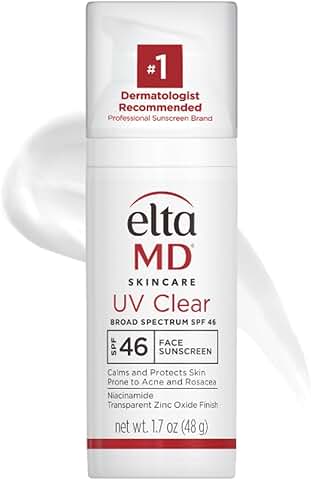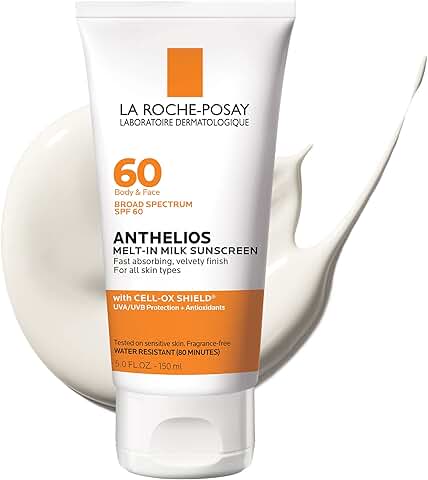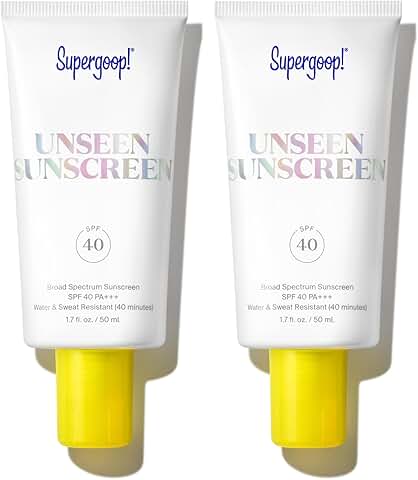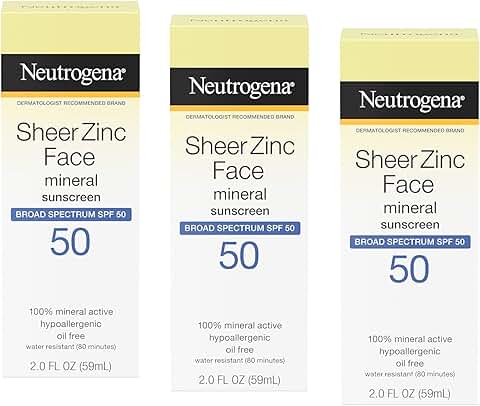Introduction
The skincare industry bombards us with an overwhelming array of products and complex routines. However, achieving healthy, glowing skin doesn’t require a 10-step regimen or a cabinet full of expensive serums.
A streamlined approach focusing on key essentials often yields the best results.
This guide explores the core products that form the foundation of an effective skincare routine, backed by dermatological research and proven efficacy.
The Cornerstones of Skin Health
1. Cleanser: Your Fresh Start
Every effective skincare routine begins with a clean slate. Cleansing removes accumulated dirt, oil, sweat, and environmental pollutants, preparing your skin to receive the benefits of subsequent products.
The ideal cleanser thoroughly cleans without stripping your skin of it’s natural oils. For most people, a gentle, pH-balanced cleanser works wonders.
Those with oily or acne-prone skin might benefit from a cleanser containing salicylic acid, while dry or sensitive skin types should opt for creamy, non-foaming formulations.
Double cleansing, a technique popularized by Korean skincare routines, can be particularly effective for removing stubborn makeup and sunscreen. Start with an oil-based cleanser to dissolve makeup, followed by a water-based cleanser to remove any remaining residue.
When selecting a cleanser, consider your skin type:
- Oily skin: Look for gel-based or foaming cleansers with ingredients like salicylic acid or benzoyl peroxide.
- Dry skin: Choose creamy, hydrating cleansers with ingredients like glycerin or hyaluronic acid.
- Sensitive skin: Opt for fragrance-free, gentle cleansers with minimal ingredients.
- Combination skin: Consider using different cleansers for different areas of your face or alternating between types.
Remember, cleansing should leave your skin feeling clean but not tight or stripped. If your skin feels uncomfortable after cleansing, it’s time to switch products.
2. Moisturizer: The Hydration Essential
Moisturizing is crucial for all skin types, even oily ones. It helps maintain the skin’s barrier function, prevents water loss, and can even help regulate oil production in acne-prone skin. The right moisturizer can significantly improve your skin’s texture, appearance, and overall health.
When choosing a moisturizer:
- Oily or combination skin: Look for lightweight, oil-free formulations. Gel-based moisturizers or those labeled “non-comedogenic” are excellent choices.
- Dry skin: Benefit from richer creams with ingredients like hyaluronic acid, ceramides, or glycerin.
- Sensitive skin: Opt for fragrance-free options with soothing ingredients like aloe vera or chamomile.
Consider using different moisturizers for day and night. Daytime moisturizers should be lighter and potentially contain SPF, while night creams can be richer and more nourishing.
Key ingredients to look for in moisturizers include:
- Hyaluronic acid: This powerful humectant can hold up to 1000 times it’s weight in water, providing intense hydration.
- Ceramides: These lipids help strengthen the skin barrier and retain moisture.
- Glycerin: Another effective humectant that draws water into the skin.
- Niacinamide: This form of vitamin B3 helps improve skin elasticity and reduce inflammation.
- Antioxidants: Ingredients like vitamin C or E can help protect the skin from environmental damage.
Remember, consistency is key with moisturizing. Apply your moisturizer to slightly damp skin to lock in hydration, and don’t forget often-neglected areas like your neck and décolletage.
3. Sunscreen: Your Ultimate Anti-Aging Tool
Daily sun protection is the most effective way to prevent premature aging, hyperpigmentation, and skin cancer. UV rays can damage your skin even on cloudy days or when you’re indoors near windows.
When choosing a sunscreen:
- Look for broad-spectrum protection with at least SPF 30.
- For everyday use, choose a lightweight, non-greasy formula that works well under makeup.
- If you have sensitive skin, mineral sunscreens with zinc oxide or titanium dioxide are less likely to cause irritation.
Apply sunscreen generously to all exposed areas of skin, including often-forgotten spots like the ears, back of the neck, and tops of the feet. Reapply every two hours, or more frequently if swimming or sweating.
Some excellent sunscreen options include:
- La Roche-Posay Anthelios Melt-In Sunscreen Milk SPF 60: A lightweight, fast-absorbing formula suitable for face and body.
- EltaMD UV Clear Broad-Spectrum SPF 46: Great for acne-prone skin, containing niacinamide to help with oil control.
- Supergoop! Unseen Sunscreen SPF 40: A clear, weightless formula that works well under makeup.
- Neutrogena Sheer Zinc Dry-Touch Sunscreen SPF 50: A mineral option for people who have sensitive skin.
Remember, sunscreen is only effective when used correctly. Apply it as the last step in your morning skincare routine, before makeup, and don’t forget to reapply throughout the day.
Beyond the Basics: Targeted Treatments
While the cleanse-moisturize-protect trio forms the core of a skincare routine, adding a few targeted treatments can address specific skin concerns and elevate your regimen.
4. Exfoliant: The Skin Smoother
Regular exfoliation improves skin texture and appearance. It removes dead skin cells, unclogs pores, and helps other skincare products penetrate more effectively.
However, moderation is key to avoid over-exfoliation.
There are two main types of exfoliants:
- Physical exfoliants: These include scrubs with small particles that physically remove dead skin cells.
While effective, they can be harsh if used too frequently or with too much pressure.
- Chemical exfoliants: These use acids or enzymes to dissolve the bonds between dead skin cells.
They’re generally gentler and more effective than physical exfoliants.
Popular chemical exfoliants include:
- Alpha Hydroxy Acids (AHAs): Like glycolic or lactic acid, these work on the skin’s surface to improve texture and brightness.
- Beta Hydroxy Acids (BHAs): Such as salicylic acid, these penetrate pores and are excellent for oily or acne-prone skin.
- Polyhydroxy Acids (PHAs): These provide gentle exfoliation and are suitable for sensitive skin.
For most skin types, using a chemical exfoliant 2-3 times a week is sufficient. If you’re new to exfoliation, start slowly.
Use the product once a week and gradually increase frequency as your skin adjusts.
Some excellent exfoliating products include:
- Paula’s Choice 2% BHA Liquid Exfoliant: A gentle, leave-on exfoliant with salicylic acid.
- The Ordinary Glycolic Acid 7% Toning Solution: An affordable AHA option for overall skin renewal.
- Drunk Elephant T.L.C. Framboos Glycolic Night Serum: A potent blend of AHAs and BHAs for overnight exfoliation.
Remember to always follow exfoliation with moisturizer and sunscreen, as exfoliated skin can be more sensitive to UV damage.
5. Serum: The Concentrated Boost
Serums deliver concentrated active ingredients deep into the skin, targeting specific concerns like fine lines, dark spots, or dehydration. They’re applied after cleansing but before moisturizing.
Popular serum ingredients include:
- Vitamin C: For brightening and antioxidant protection.
Look for L-ascorbic acid, the most effective form of vitamin C.
- Hyaluronic acid: For intense hydration.
This molecule can hold up to 1000 times it’s weight in water.
- Niacinamide: For pore refinement and oil control.
It also helps strengthen the skin barrier.
- Retinol: For anti-aging and acne management.
Start with a low concentration and gradually increase to avoid irritation.
- Peptides: These amino acid chains can help stimulate collagen production and improve skin firmness.
When incorporating serums into your routine:
- Start with one targeted serum and give it time to work before adding others.
- Apply serums to slightly damp skin for better absorption.
- Use vitamin C serums in the morning for antioxidant protection throughout the day.
- Apply retinol serums at night, as they can increase sun sensitivity.
Some highly-rated serums include:
- SkinCeuticals C E Ferulic: A potent vitamin C serum for brightening and antioxidant protection.
- The Ordinary Niacinamide 10% + Zinc 1%: An affordable option for oil control and pore refinement.
- Drunk Elephant T.L.C. Framboos Glycolic Night Serum: A blend of AHAs and BHAs for overnight exfoliation and skin renewal.
- La Roche-Posay Hyalu B5 Serum: A hydrating serum with hyaluronic acid and vitamin B5.
Remember, you don’t need to use every trendy ingredient at once. Choose serums based on your primary skin concerns and introduce them gradually into your routine.
6. Eye Cream: The Delicate Touch
The skin around our eyes is thinner and more delicate than the rest of our face, making it prone to fine lines, puffiness, and dark circles. A specialized eye cream can address these concerns with gentler formulations that won’t irritate this sensitive area.
When choosing an eye cream, look for ingredients like:
- Caffeine: For de-puffing and improving circulation
- Peptides: For fine lines and improving skin elasticity
- Vitamin K: For dark circles
- Hyaluronic acid: For hydration
- Retinol: For anti-aging (use with caution, as it can be irritating)
Apply eye cream with your ring finger using a gentle patting motion to avoid tugging at the delicate skin. A small amount goes a long way – use about the size of a grain of rice for both eyes.
Some well-regarded eye creams include:
- Kiehl’s Creamy Eye Treatment with Avocado: A rich, hydrating option for dry under-eyes.
- The Ordinary Caffeine Solution 5% + EGCG: An affordable option for reducing puffiness and dark circles.
- RoC Retinol Correxion Eye Cream: A retinol-based cream for addressing fine lines and wrinkles.
- Neutrogena Hydro Boost Eye Gel-Cream: A lightweight, hydrating option suitable for all skin types.
Remember, consistency is key with eye creams. It may take several weeks of regular use to see noticeable results.
Adapting Your Routine
Skincare isn’t one-size-fits-all. Your perfect routine depends on your skin type, concerns, lifestyle, and even the climate you live in. Don’t be afraid to experiment and adjust your routine as needed.
Factors that may influence your skincare needs include:
- Seasonal changes: You might need a richer moisturizer in winter and a lighter one in summer.
- Hormonal fluctuations: Your skin may become oilier or more prone to breakouts during certain times of your menstrual cycle.
- Stress: High stress levels can exacerbate skin issues like acne or eczema.
- Age: As we get older, our skin typically becomes drier and may benefit from more hydrating and anti-aging products.
- Diet and lifestyle: Factors like sleep, hydration, and nutrition can all impact skin health.
Pay attention to how your skin responds to products and be willing to make adjustments. If a product causes irritation, redness, or breakouts, stop use.
On the other hand, if you’re not seeing results after several weeks of consistent use, it might be time to try something new.
Common Pitfalls to Avoid
- Overcomplicating your routine: More products don’t always mean better results.
Start simple and add products gradually.
- Expecting instant results: Most skincare products take 4-6 weeks of consistent use to show noticeable effects.
Be patient and give products time to work.
- Neglecting your neck and décolletage: These areas can show signs of aging just as much as your face.
Extend your skincare routine to include these areas.
- Using too many active ingredients at once: This can lead to irritation and damage your skin barrier.
Introduce new active ingredients slowly and avoid using many potent products (like retinol and vitamin C) at the same time.
- Skipping sunscreen on cloudy days: UV rays can penetrate clouds and even windows.
Make sunscreen application a daily habit, regardless of the weather.
- Over-exfoliating: While exfoliation can be useful, doing it too often can damage your skin barrier.
Stick to 2-3 times a week for most skin types.
- Touching your face frequently: Our hands carry bacteria that can lead to breakouts.
Try to minimize face-touching throughout the day.
- Not removing makeup before bed: Sleeping with makeup on can clog pores and lead to breakouts.
Always cleanse your face before sleep, even if you’re tired.
- Using hot water to wash your face: Hot water can strip your skin of it’s natural oils.
Use lukewarm water instead.
- Applying products in the wrong order: Generally, apply products from thinnest to thickest consistency for optimal absorption.
You’ll learn to read ingredient lists, understand your skin’s responses, and make informed choices about new products and treatments.
Great skin needs consistency, patience, and a willingness to learn and adapt. But with the right foundation of essential products and a bit of skincare knowledge, you’re well on your way to accessing your best skin yet.
Putting It All Together: Your Essential Routine
Morning:
- Cleanse
- Serum (optional)
- Eye cream
- Moisturizer
- Sunscreen
Evening:
- Cleanse (double cleanse if wearing makeup)
- Exfoliate (2-3 times a week)
- Serum
- Eye cream
- Moisturizer
Key Takeaways:
- Cleansing, moisturizing, and sun protection form the core of any effective skincare routine.
- Targeted treatments like serums and exfoliants can address specific skin concerns.
- Consistency is key – give products time to work before expecting results.
- Adapt your routine to your skin’s changing needs and environmental factors.
- Quality matters more than quantity when it comes to skincare products.
Frequently Asked Questions
What order should I apply skincare products?
Generally, apply products from thinnest to thickest consistency. A typical order would be: cleanser, toner (if used), serum, eye cream, moisturizer, and sunscreen (in the morning).
How often should I exfoliate my skin?
For most skin types, exfoliating 2-3 times a week is sufficient. If you have sensitive skin, you might want to limit it to once a week.
Can I use vitamin C and retinol together?
While both are useful, they can be irritating when used together. It’s best to use vitamin C in the morning and retinol at night.
Do I need to double cleanse if I don’t wear makeup?
Double cleansing can still be beneficial even if you don’t wear makeup, especially if you wear sunscreen or live in a polluted environment.
How long does it take to see results from a new skincare product?
Most skincare products take 4-6 weeks of consistent use to show noticeable effects. Some products, like chemical exfoliants, might show quicker results.
Is it necessary to use a toner?
Toners aren’t essential for everyone. They can be beneficial for balancing pH levels or providing extra hydration, but a good cleanser should be sufficient for most people.
Can I use the same products for day and night?
While you can, it’s often beneficial to use different products. Daytime products should focus on protection (like antioxidants and SPF), while nighttime products can focus on repair and renewal.
How do I know if a product is breaking me out?
If you’re experiencing new breakouts in areas where you don’t typically break out, and it coincides with introducing a new product, that product may be the culprit. However, some products can cause initial purging before improving skin.
Is natural skincare better than synthetic products?
Not necessarily. Both natural and synthetic ingredients can be effective or irritating, depending on the specific ingredient and your skin type.
What matters most is the formulation and how your skin responds to it.
How can I reduce the appearance of large pores?
Regular exfoliation, using products with niacinamide or salicylic acid, and keeping skin well-hydrated can all help minimize the appearance of pores. Remember, pore size is largely genetic and can’t be permanently changed.



